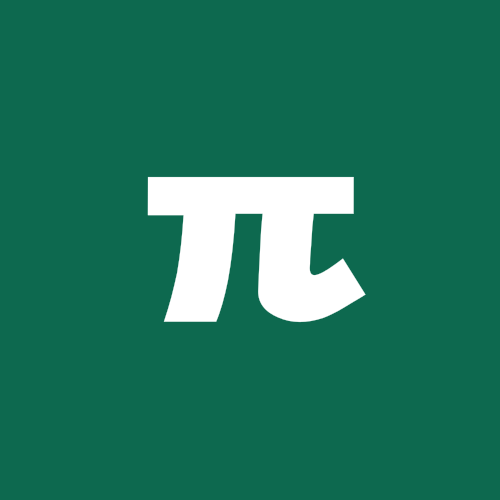Numbers are the universal language of mathematics. From simple counting of objects to the most complex equations of modern physics, numbers accompany us in every aspect of daily life and scientific research. But how did the different types of numbers we use come about? And why do we need so many of them?
The answer lies in a beautiful mathematical construction: starting from the simplest numbers (those we use for counting), every time we encounter a problem we cannot solve, we "invent" new numbers that allow us to solve it. It's like building a house: you start with the foundations and add one floor at a time, until you obtain a complete and robust structure.
Index
- Natural Numbers \(\mathbb{N}\)
- Integers \(\mathbb{Z}\)
- Rational Numbers \(\mathbb{Q}\)
- Irrational Numbers
- Real Numbers \(\mathbb{R}\)
- The Big Family: How They Are Connected
- Why Are They Important?
Natural Numbers \(\mathbb{N}\)
Everything begins with the numbers we learn as children: 1, 2, 3, 4, 5... Natural numbers are the first numbers that humanity used, born from the practical need to count objects.
Definition: The set of natural numbers \(\mathbb{N}\) can be defined in two ways:
- \(\mathbb{N} = \{1, 2, 3, 4, 5, ...\}\) (the "classical" version)
- \(\mathbb{N}_0 = \{0, 1, 2, 3, 4, 5, ...\}\) (including zero)
What can we do with natural numbers?
Natural numbers are perfect for some operations:
- Addition: \(3 + 5 = 8\) (always a natural number)
- Multiplication: \(4 \times 6 = 24\) (always a natural number)
We can also define an order: \(1 < 2 < 3 < 4 < ...\)
The first problem: subtraction
But what happens if we want to calculate \(3 - 5\)? Or more generally, \(x + 5 = 3\)? With natural numbers alone, this problem has no solution! This is where the need to "invent" new numbers arises.
Integers \(\mathbb{Z}\)
To solve the problem of subtraction, mathematicians introduced negative numbers. Thus integers are born.
Definition: The set of integers \(\mathbb{Z}\) includes all natural numbers, their opposites and zero:
\[\mathbb{Z} = \{..., -3, -2, -1, 0, 1, 2, 3, ...\}\]
The advantages of integers
With integers we can finally:
- Subtract freely: \(3 - 5 = -2\)
- Have a neutral element for addition: \(a + 0 = a\)
- Every number has an opposite: \(5 + (-5) = 0\)
Integers form what mathematicians call a ring: a structure where addition, subtraction and multiplication always work as we expect.
The second problem: division
Now we can solve equations like \(x + 5 = 3\), but what do we do with \(3x = 7\)? Even here, with integers alone we don't have a solution. We need another qualitative leap.
Rational Numbers \(\mathbb{Q}\)
To handle division, we introduce fractions. Rational numbers are all those numbers that can be written as a ratio of two integers.
Definition: The set of rational numbers \(\mathbb{Q}\) is:
\[\mathbb{Q} = \left\{\frac{p}{q} : p, q \in \mathbb{Z}, q \neq 0\right\}\]
Examples: \(\displaystyle \frac{3}{7}\), \(\displaystyle \frac{-5}{2}\), \(\displaystyle \frac{22}{7}\) (an approximation of \(\pi\)), \(4 = \displaystyle \frac{4}{1}\)
Rational numbers are a field
With rational numbers we can perform all four fundamental operations:
- Addition and subtraction: always possible
- Multiplication: always possible
- Division: possible for any number different from zero
How to recognize a rational number
Every rational number, when written in decimal form, has a special characteristic:
- Finite decimals: \(\displaystyle \frac{1}{4} = 0.25\)
- Periodic decimals: \(\displaystyle \frac{1}{3} = 0.333...\), \(\displaystyle \frac{22}{7} = 3.142857142857...\)
Important rule: A number is rational if and only if its decimal representation is finite or periodic.
A shocking discovery: \(\sqrt{2}\) is not rational!
Ancient Greek mathematicians made a discovery: there exist numbers that cannot be written as fractions! The most famous is \(\sqrt{2}\), the length of the diagonal of a square with side \( 1 \).
Proof (by contradiction): Suppose that \(\sqrt{2} = \displaystyle \frac{p}{q}\) with \(p\) and \(q\) integers without common factors. Squaring: \(2 = \displaystyle \frac{p^2}{q^2}\), therefore \(2q^2 = p^2\). This means that \(p^2\) is even, therefore \(p\) is also even. If \(p = 2k\), then \(2q^2 = 4k^2\), that is \(q^2 = 2k^2\). But then \(q\) is also even, contradicting the hypothesis that \(p\) and \(q\) have no common factors.
This discovery revolutionized mathematics: there existed "irrational" numbers!
Irrational Numbers
Irrational numbers are all those real numbers that are not rational. In other words, they cannot be written as a fraction of integers.
Definition: Irrational numbers are all real numbers that are not rational, that is \(\mathbb{R} \setminus \mathbb{Q}\)
How to recognize an irrational number
An irrational number always has an infinite and non-periodic decimal representation. Examples:
- \(\sqrt{2} = 1.414213562373...\) (continues infinitely without repeating)
- \(\pi = 3.141592653589...\) (the ratio between circumference and diameter)
- \(e = 2.718281828459...\) (the base of natural logarithms)
Two families of irrational numbers
Algebraic numbers
They are solutions of polynomial equations with rational coefficients:
- \(\sqrt{2}\) (solution of \(x^2 - 2 = 0\))
- \(\sqrt{3}\), \(\sqrt[3]{5}\), etc.
- The golden ratio: \(\phi = \displaystyle \frac{1 + \sqrt{5}}{2}\)
Transcendental numbers
They are not solutions of any polynomial equation with rational coefficients. They are "more irrational" than algebraic ones:
- \(\pi\) (proven by Lindemann in 1882)
- \(e\) (proven by Hermite in 1873)
Real Numbers \(\mathbb{R}\)
Finally we arrive at the most complete set: real numbers. These include all the numbers we have seen so far.
The completeness of real numbers
Real numbers have a fundamental property called completeness: they completely fill the number line, without "holes". This means that:
- Every point on the line corresponds to a real number
- Every real number corresponds to a point on the line
- There are no "empty spaces" between numbers
Important properties of real numbers
- Complete ordered field: all operations work and every set bounded above has a supremum
- Density: between any two real numbers there are infinitely many others
- Connectedness: the real line is "all in one piece"
The Zero Theorem
One of the most beautiful consequences of completeness is Bolzano's Zero Theorem:
Theorem: If a continuous function \(f\) on an interval \([a,b]\) takes values of opposite sign at the endpoints (that is \(f(a) \cdot f(b) < 0\)), then there exists at least one point \(c\) in the interval where \(f(c) = 0\).
In simple words: if a continuous function "starts below" the \( x \) axis and "arrives above" (or vice versa), it must necessarily cross the axis somewhere!
The Big Family: How They Are Connected
All these sets of numbers are connected in a chain of inclusions:
\[\mathbb{N} \subset \mathbb{Z} \subset \mathbb{Q} \subset \mathbb{R}\]
Each set contains the previous one as a special case:
- Natural numbers are particular integers (the positive ones)
- Integers are particular rationals (those with denominator \( 1 \))
- Rationals are particular reals
| Set | Symbol | Characteristic | Example |
|---|---|---|---|
| Natural Numbers | \(\mathbb{N}\) | For counting | 1, 2, 3, 4, ... |
| Integers | \(\mathbb{Z}\) | With negatives | ..., -2, -1, 0, 1, 2, ... |
| Rational Numbers | \(\mathbb{Q}\) | Fractions | \(\frac{3}{4}\), \(\frac{-7}{2}\), \(\frac{22}{7}\) |
| Irrational Numbers | \(\mathbb{R} \setminus \mathbb{Q}\) | Not fractions | \(\sqrt{2}\), \(\pi\), \(e\) |
| Real Numbers | \(\mathbb{R}\) | All together | Any number on the line |
A surprising fact
Even though rational numbers are "dense" (between two rationals there is always another rational), in reality they are "very few" compared to irrationals. If we could "weigh" the numbers on the real line, rationals would have "zero weight"! This means that the vast majority of real numbers are irrational.
Why Are They Important?
In daily life
We use different types of numbers without realizing it:
- Natural: counting objects, age, quantities
- Integers: temperatures below zero, building floors (floor \( -2 \))
- Rational: cooking recipes (\(\displaystyle \frac{3}{4}\) of a cup), percentages, prices
- Irrational: precise geometric measurements, scientific calculations
In science and engineering
- Physics: many fundamental constants are irrational (\(\pi\), \(e\))
- Geometry: \(\sqrt{2}\) for diagonals, \(\pi\) for circumferences and areas
- Statistics: the famous bell curve involves \(e\) and \(\pi\)
- Computer science: cryptography algorithms based on prime numbers
In advanced mathematics
Real numbers are the basis for:
- Analysis: limits, derivatives, integrals
- Geometry: coordinates, distances, areas, volumes
- Differential equations: growth models, oscillations, waves
In just a few centuries, humanity has gone from simple counting with pebbles to building a mathematical edifice of extraordinary elegance and power.
Every time mathematicians encountered a limit - an equation impossible to solve, a calculation that couldn't be done - instead of giving up they "invented" new numbers. And each invention opened unimaginable doors:
- Negative numbers made modern algebra possible
- Fractions allowed precise measurements
- Irrationals revealed the true nature of geometry
- Reals made infinitesimal calculus possible
But the story doesn't end here. After reals, mathematicians continued their exploration by creating complex numbers (to solve \(x^2 + 1 = 0\)), quaternions, and even more exotic structures.
The most important lesson: in mathematics, every "impossibility" is often just the beginning of a new discovery. When we can't solve a problem with the tools we have, maybe it's time to invent new tools!

